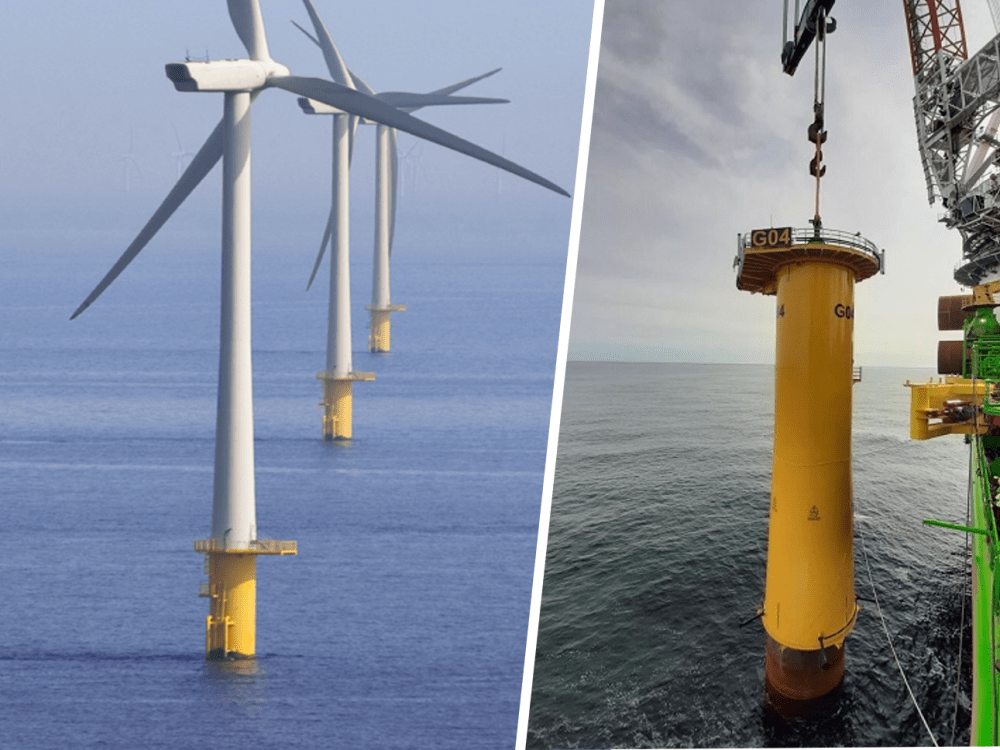The Rising Cost Of Offshore Wind: Impact On Energy Investment

Table of Contents
Factors Contributing to the Rising Cost of Offshore Wind Energy
Several interconnected factors are pushing up the cost of offshore wind energy, making it a more challenging investment proposition than previously anticipated. These include escalating material and manufacturing costs, higher installation and maintenance expenses, complex permitting and regulatory hurdles, and the ongoing need for technological advancements.
Increasing Material and Manufacturing Costs
The construction of offshore wind turbines requires substantial quantities of steel, concrete, and specialized equipment. The rising prices of these materials, exacerbated by global supply chain disruptions and inflation, significantly impact project costs.
- Steel: Prices have fluctuated dramatically in recent years, driven by factors such as increased demand and geopolitical instability.
- Concrete: The need for large quantities of high-strength concrete for foundations adds to the overall cost burden.
- Specialized Equipment: The manufacturing and procurement of specialized gearboxes, generators, and blades represent a substantial portion of project expenses.
Inflation further compounds these challenges, increasing the overall cost of labor, transportation, and other project-related expenses, making accurate cost projections difficult and impacting the profitability of offshore wind farms.
Higher Installation and Maintenance Expenses
Installing offshore wind turbines in deep waters is a complex and costly undertaking. This necessitates the use of specialized vessels, such as heavy-lift jack-up barges and floating installation vessels, and highly skilled labor.
- Specialized Vessels: These vessels are expensive to charter and operate, significantly contributing to project costs.
- Skilled Labor: The demand for experienced technicians and engineers specialized in offshore wind installation and maintenance drives up labor costs.
- Logistics: Transporting and assembling massive turbine components in challenging maritime environments adds further complexity and cost.
Moreover, the ongoing maintenance of offshore wind farms requires regular inspections, repairs, and component replacements, adding to the long-term operational expenditure and impacting the overall return on energy investment. Adverse weather conditions can further complicate and delay both installation and maintenance, increasing overall project timelines and costs.
Permitting and Regulatory Hurdles
The development of offshore wind projects often involves lengthy and complex permitting processes, which can lead to significant delays and increased costs. Regulatory uncertainties and changes in environmental regulations further add to the complexity.
- Environmental Impact Assessments: Thorough environmental impact assessments are crucial but can be time-consuming and expensive.
- Stakeholder Consultations: Extensive consultations with various stakeholders, including local communities, fishing industries, and environmental groups, are necessary but can add to the project timeline.
- Grid Connection Permits: Securing permits for connecting the offshore wind farm to the onshore electricity grid can also prove challenging and costly.
These regulatory hurdles, coupled with potential legal challenges and appeals, can significantly delay project completion and increase overall costs, impacting the return on energy investment in offshore wind projects.
Technological Advancements and R&D Costs
The offshore wind industry requires continuous technological innovation to improve efficiency, reduce costs, and increase capacity. However, this innovation comes at a cost. Research and development (R&D) efforts to develop more efficient and cost-effective turbines, blades, and foundation designs represent substantial investments.
- Larger Turbine Sizes: While increasing capacity, larger turbines also require larger and more expensive vessels for installation and maintenance.
- Floating Offshore Wind: While promising for deeper waters, floating offshore wind technology is still under development, resulting in higher initial investment costs.
- Improved Blade Materials: Research into lighter and more durable blade materials is crucial, but this research and the subsequent manufacturing processes contribute to costs.
Despite the high initial R&D costs, technological improvements hold the key to long-term cost reductions and the overall viability of offshore wind energy.
Impact on Energy Investment Decisions
The rising cost of offshore wind energy has significant implications for investment decisions in this sector. It impacts investor confidence, necessitates government intervention through policies and subsidies, and necessitates a focus on innovative cost-reduction strategies.
Reduced Investor Confidence
The increased costs associated with offshore wind projects can make them less attractive to investors. The higher financial risk involved in large-scale offshore wind projects, coupled with potential delays and cost overruns, reduces investor confidence.
- Project Delays: Many projects have experienced significant delays due to permitting issues, supply chain disruptions, and other unforeseen challenges.
- Cost Overruns: Unexpected cost increases have led to several project cancellations or significant budget revisions.
- Competition from other Renewables: The competitiveness of other renewable energy sources, such as solar and onshore wind, also influences investment choices.
Government Policies and Subsidies
Government policies and subsidies play a crucial role in supporting offshore wind energy development. Stable and predictable regulatory environments are vital for attracting private investment.
- Tax Incentives: Tax credits and other financial incentives can significantly reduce the cost of offshore wind projects and encourage investment.
- Feed-in Tariffs: Guaranteed prices for electricity generated from offshore wind farms can provide a stable revenue stream for investors.
- Carbon Pricing: Effective carbon pricing mechanisms can make offshore wind more competitive compared to fossil fuel-based power generation.
Opportunities for Cost Reduction and Innovation
Despite the challenges, there are significant opportunities to mitigate the rising costs of offshore wind energy. Technological innovation, improved project planning, and collaborative partnerships can play a significant role in reducing costs and increasing the attractiveness of offshore wind as an energy investment.
- Standardized Components: Adopting standardized components and designs can streamline manufacturing and reduce costs.
- Optimized Designs: Improving turbine designs for greater efficiency and lower maintenance requirements can lead to significant cost savings.
- Digitalization and AI: Using advanced technologies like AI and machine learning in project planning and management can optimize project schedules and resources.
Conclusion: The Future of Offshore Wind Energy Investment
The rising cost of offshore wind energy presents a significant challenge to the widespread adoption of this crucial renewable energy source. Increasing material and manufacturing costs, higher installation and maintenance expenses, regulatory hurdles, and the ongoing need for technological advancements all contribute to this escalating cost. This, in turn, impacts investor confidence and necessitates robust government support mechanisms. However, opportunities exist to mitigate these challenges through innovation, improved project planning, and collaborative efforts between governments, industries, and researchers. To ensure the continued growth and success of the offshore wind sector, a concerted effort is needed to address the rising cost of offshore wind and unlock its immense potential as a clean and sustainable energy source. Learn more about the current advancements and challenges facing the offshore wind industry by visiting [Link to relevant resources].

Featured Posts
-
 Drone Attack Allegation Aid Ship En Route To Gaza Sends Sos
May 03, 2025
Drone Attack Allegation Aid Ship En Route To Gaza Sends Sos
May 03, 2025 -
 Barrow Afc Fans Participate In Sky Bet Every Minute Matters Relay Cycle
May 03, 2025
Barrow Afc Fans Participate In Sky Bet Every Minute Matters Relay Cycle
May 03, 2025 -
 The Christina Aguilera Anti Aging Effect Analyzing Her Recent Video Transformation
May 03, 2025
The Christina Aguilera Anti Aging Effect Analyzing Her Recent Video Transformation
May 03, 2025 -
 Epic Games Hit With New Fortnite Lawsuit In Game Store In The Crosshairs
May 03, 2025
Epic Games Hit With New Fortnite Lawsuit In Game Store In The Crosshairs
May 03, 2025 -
 Vehicle Subsystem Issue Delays Blue Origin Rocket Launch
May 03, 2025
Vehicle Subsystem Issue Delays Blue Origin Rocket Launch
May 03, 2025
Latest Posts
-
 Analyzing The Alleged Rivalry A Timeline Of Blake Lively And Anna Kendricks Interactions
May 04, 2025
Analyzing The Alleged Rivalry A Timeline Of Blake Lively And Anna Kendricks Interactions
May 04, 2025 -
 A Comprehensive Timeline Of The Reported Feud Between Blake Lively And Anna Kendrick
May 04, 2025
A Comprehensive Timeline Of The Reported Feud Between Blake Lively And Anna Kendrick
May 04, 2025 -
 Blake Lively Vs Anna Kendrick Tracing The Timeline Of Their Alleged Feud
May 04, 2025
Blake Lively Vs Anna Kendrick Tracing The Timeline Of Their Alleged Feud
May 04, 2025 -
 Unmasking The Truth A Timeline Of The Blake Lively Anna Kendrick Conflict
May 04, 2025
Unmasking The Truth A Timeline Of The Blake Lively Anna Kendrick Conflict
May 04, 2025 -
 Comparing Styles Blake Lively And Anna Kendricks Understated Red Carpet Looks
May 04, 2025
Comparing Styles Blake Lively And Anna Kendricks Understated Red Carpet Looks
May 04, 2025
